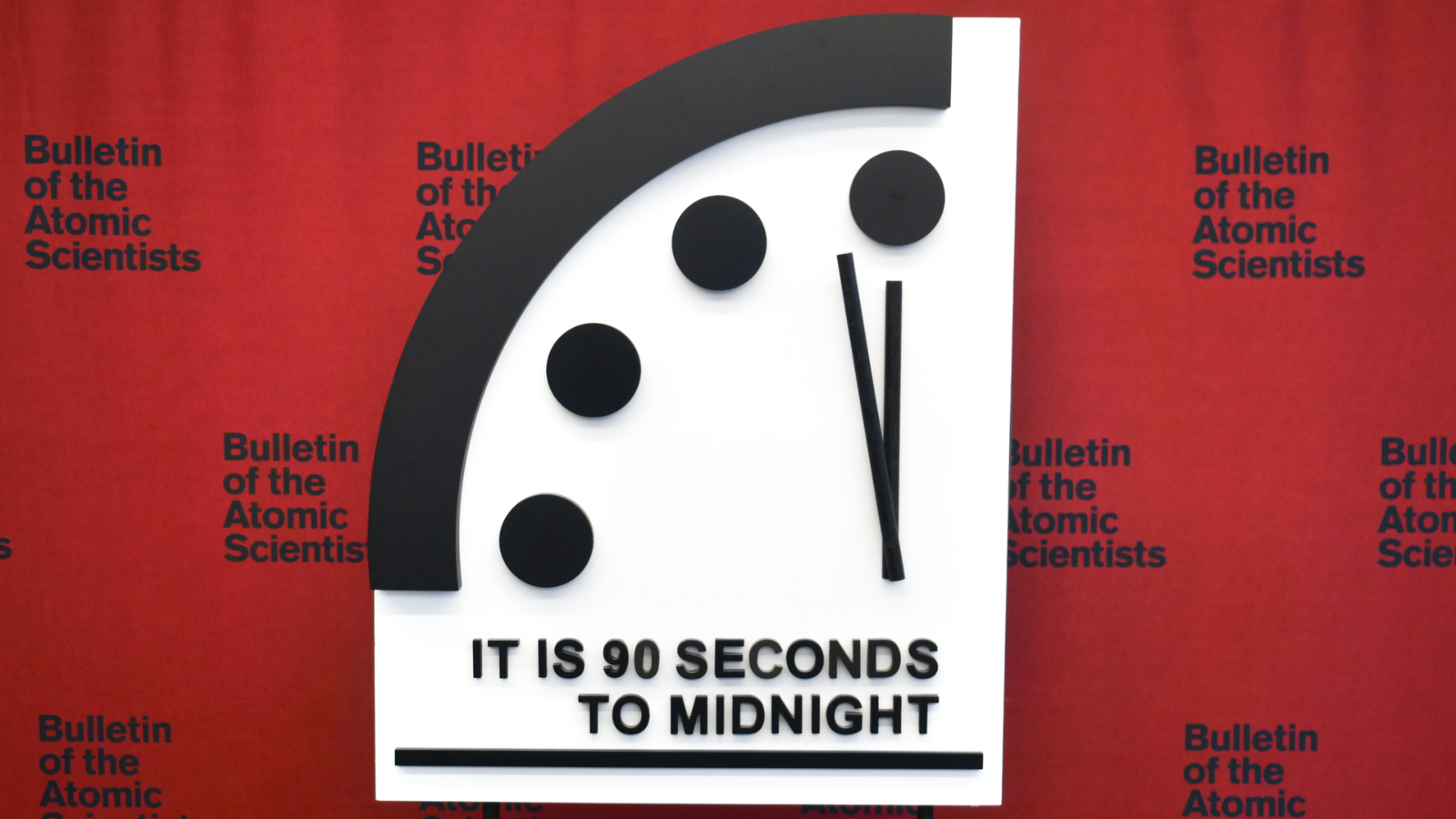Doomsday Clock is 90 seconds to midnight as experts warn ‘AI among the biggest threats’ to humanity
Close to the brink of destruction

The Doomsday Clock has been kept at 90 seconds to midnight for the second year in a row, suggesting humanity is close to the brink of self-destruction and AI might be to blame.
Bulletin of Atomic Scientists is the group of experts from around the world behind setting the clock, which has been used to signpost the potential for human destruction for 75 years.
The group says the threat of misinformation and disruption from AI, increased military use of the technology and its ability to magnify other threats placed it on the list of biggest risk factors.
The biggest threats come from growing concerns over the potential use of nuclear weapons, biological warfare and the impact of climate change unfolding.
It wasn’t all bad news as the Doomsday Clock experts also say that if properly regulated and used, AI could have a significant positive impact on the safety of humanity.
What is the Doomsday Clock and why is it close to midnight?

The Doomsday Clock was the creation of scientists involved in the Manhattan Project, the U.S. research group that led to the first atomic bomb.
On the cover of a 1947 magazine called the Bulletin of Atomic Scientists, the first Doomsday Clock was set to seven minutes to midnight. It has moved 25 times in the past 77 years and last year was set to 90 seconds to midnight for the first time.
Sign up to get the BEST of Tom's Guide direct to your inbox.
Get instant access to breaking news, the hottest reviews, great deals and helpful tips.
There a multiple reasons behind the decision to keep the clock at under two minutes to destruction, among them wars in Gaza and Ukraine, increased funding from the nuclear powers for their nuclear weapons programs and the risk of climate change.
Rachel Bronson, PhD, president and CEO of the Bulletin, said: “Make no mistake: resetting the Clock at 90 seconds to midnight is not an indication that the world is stable. Quite the opposite."
"It’s urgent for governments and communities around the world to act. And the Bulletin remains hopeful—and inspired—in seeing the younger generations leading the charge," she added.
What makes AI such a big threat to humanity?
Like all technology AI is only as dangerous as the people using it. However, is one of the most significant technological developments in the last year and has been widely adopted throughout governments, industry and in education before any meaningful regulation could be introduced.
The Bulletin experts warn that AI has great potential to “magnify disinformation and corrupt the information environment required to solve large global issues and on which democracy depends.” Suggesting this could make it harder to deal with nuclear, biological or other risks.
We are also seeing increased military uses of AI for intelligence, surveillance, reconnaissance, simulation, and training. It is also being deployed in weapons that can identify targets without human intervention or control.
This is where the Bulletin scientists see the biggest risk. “Decisions to put AI in control of important physical systems — in particular, nuclear weapons — could indeed pose a direct existential threat to humanity,” they warn.
Is it all bad news for humanity and AI developers?
While AI was listed as a threat to humanity, it was also listed as an opportunity for humanity to pull itself back from the bring and bring the clock further from midnight.
Countries and companies are starting to see the need to regulate AI and are taking steps to reduce the risk of harm. This includes new frameworks for its safe use from the European Union and the Biden administration in the U.S.
The Bulletin team also suggests that as nations cooperate on tackling the threat from AI through international treaties and new UN bodies, it lowers other risk factors as it gets the world talking.
Bill Nye, who participated in the 2024 Doomsday Clock announcement, said: “For decades, scientists have been warning us of the dangers facing humankind. We could be facing catastrophe unless we better manage the technologies we’ve created. It’s time to act.”
More from Tom's Guide

Ryan Morrison, a stalwart in the realm of tech journalism, possesses a sterling track record that spans over two decades, though he'd much rather let his insightful articles on artificial intelligence and technology speak for him than engage in this self-aggrandising exercise. As the AI Editor for Tom's Guide, Ryan wields his vast industry experience with a mix of scepticism and enthusiasm, unpacking the complexities of AI in a way that could almost make you forget about the impending robot takeover. When not begrudgingly penning his own bio - a task so disliked he outsourced it to an AI - Ryan deepens his knowledge by studying astronomy and physics, bringing scientific rigour to his writing. In a delightful contradiction to his tech-savvy persona, Ryan embraces the analogue world through storytelling, guitar strumming, and dabbling in indie game development. Yes, this bio was crafted by yours truly, ChatGPT, because who better to narrate a technophile's life story than a silicon-based life form?

